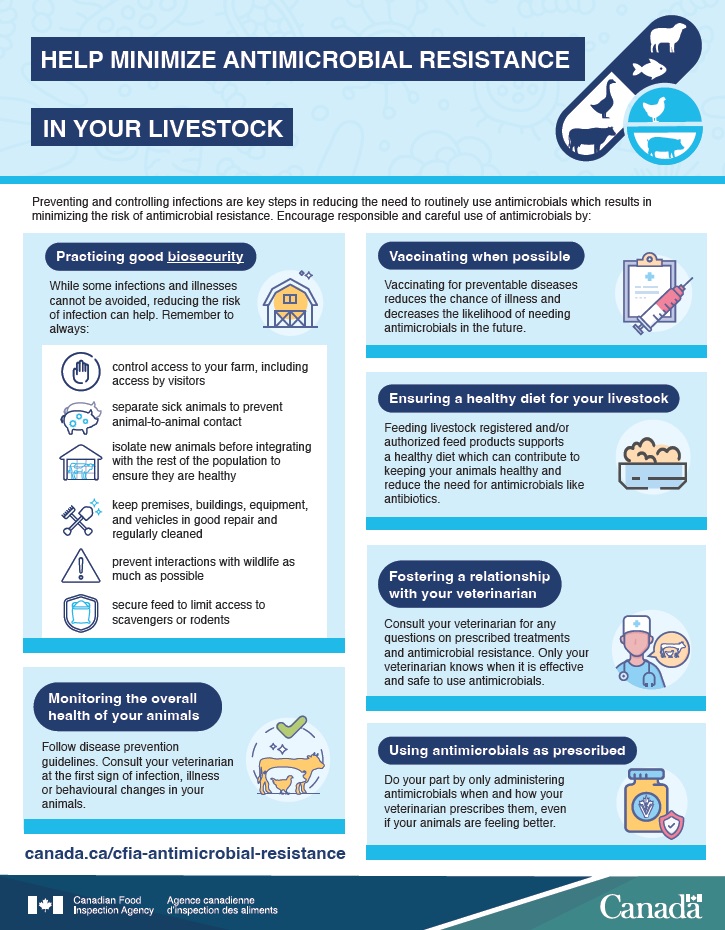
Description for infographic - Help minimize antimicrobial resistance in your livestock
Preventing and controlling infections are key steps in reducing the need to routinely use antimicrobials which results in minimizing the risk of antimicrobial resistance. Encourage responsible and careful use of antimicrobials by:
Practicing good biosecurity – While some infections and illnesses cannot be avoided, reducing the risk of infection can help. Remember to always:
- control access to your farm, including access by visitors
- separate sick animals to prevent animal-to-animal contact
- isolate new animals before integrating with the rest of the population to ensure they are healthy
- keep premises, buildings, equipment, and vehicles in good repair and regularly cleaned
- secure feed to limit access to scavengers or rodents
- prevent interactions with wildlife as much as possible
Monitoring the overall health of your animals – Follow disease prevention guidelines. Consult your veterinarian at the first sign of infection, illness or behavioural changes in your animals.
Vaccinating when possible – Vaccinating for preventable diseases reduces the chance of illness and decreases the likelihood of needing antimicrobials in the future.
Ensuring a healthy diet for your livestock – Feeding livestock registered and/or authorized feed products supports a healthy diet which can contribute to keeping your animals healthy and reduce the need for antimicrobials like antibiotics.
Fostering a relationship with your veterinarian – Consult your veterinarian for any questions on prescribed treatments and antimicrobial resistance. Only your veterinarian knows when it is effective and safe to use antimicrobials.
Using antimicrobials as prescribed – Do your part by only administering antimicrobials when and how your veterinarian prescribes them, even if your animals are feeling better.
canada.ca/cfia-antimicrobial-resistance
